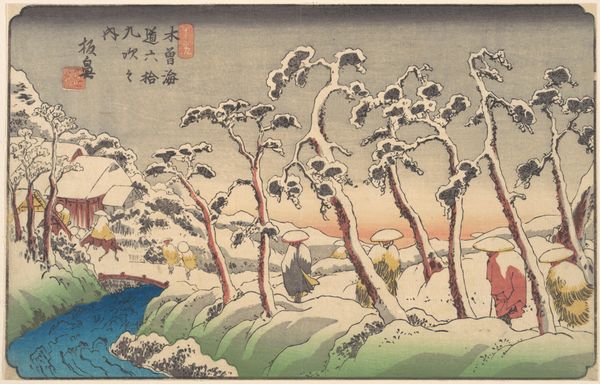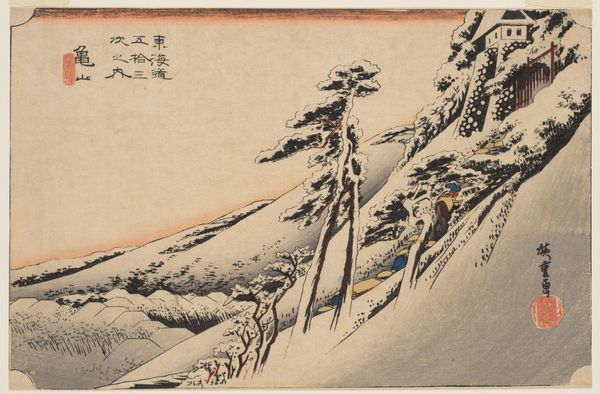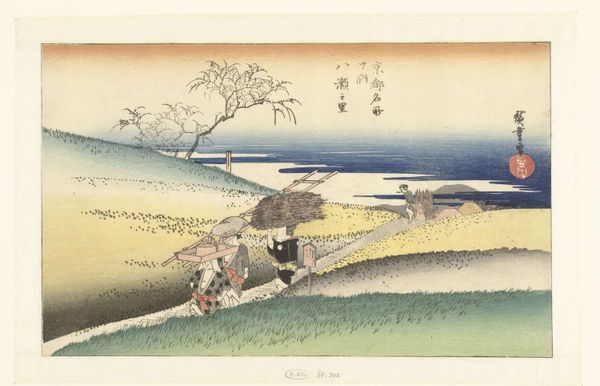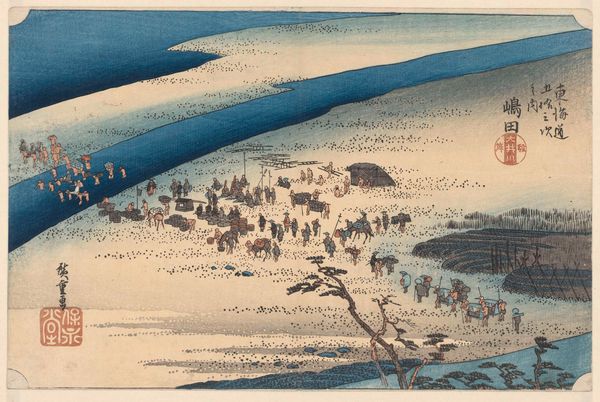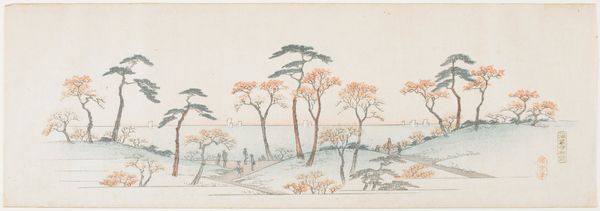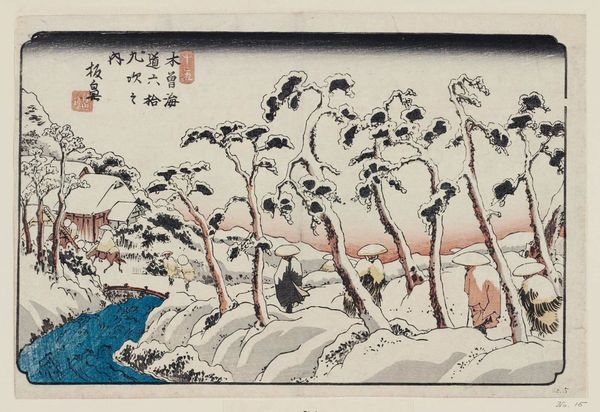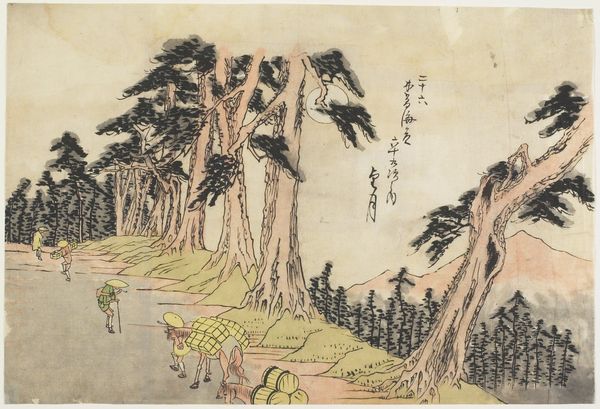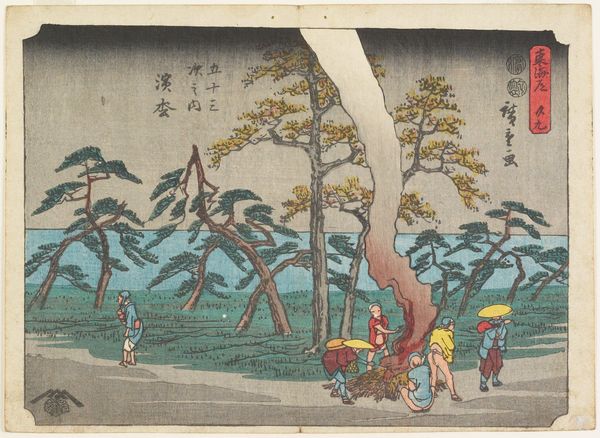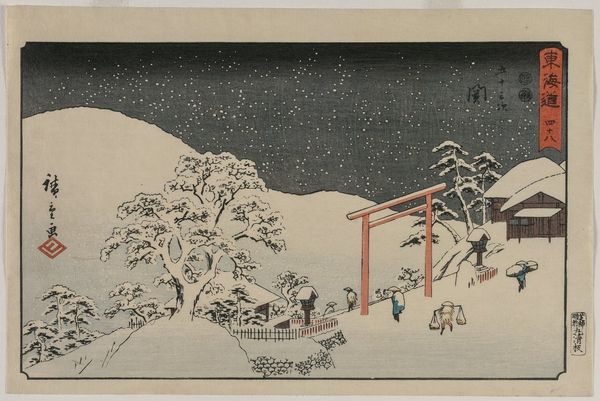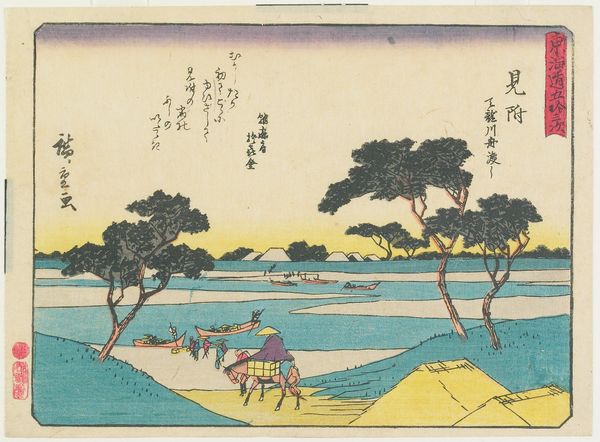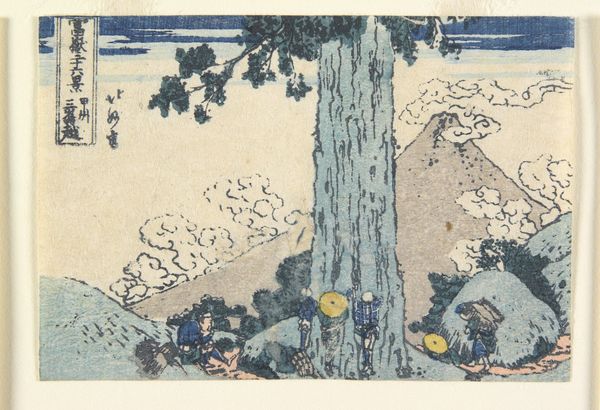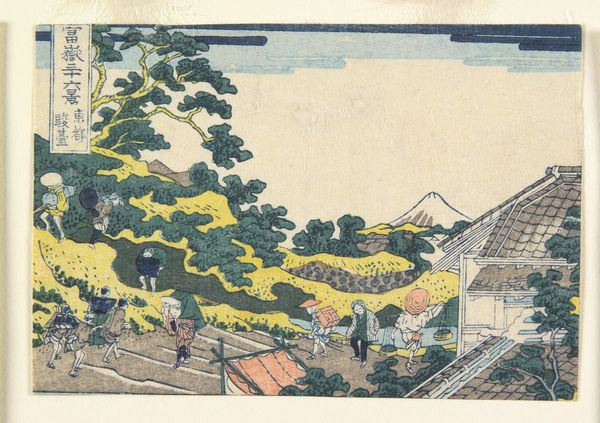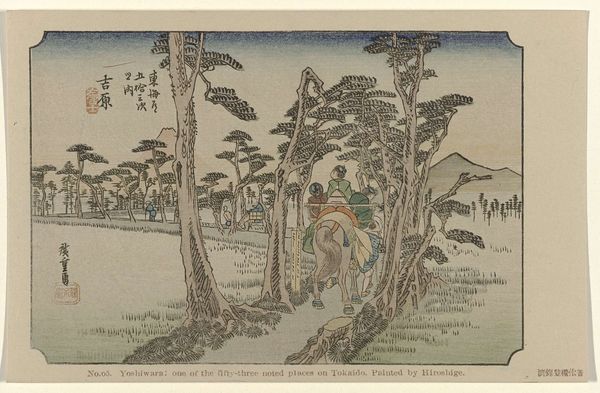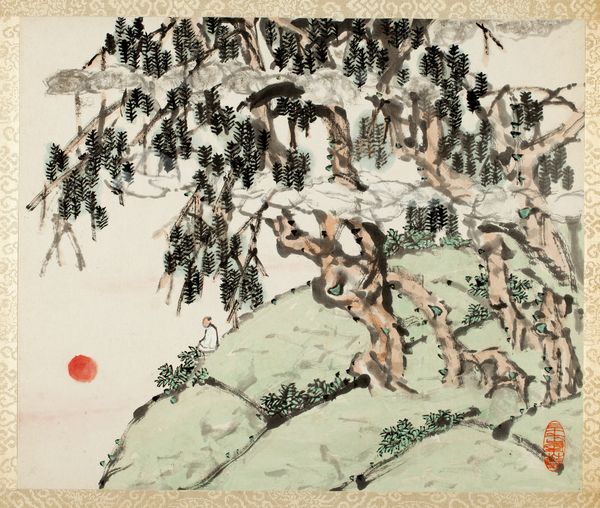
print, woodblock-print
#
lake
# print
#
asian-art
#
landscape
#
ukiyo-e
#
woodblock-print
#
watercolour illustration
#
genre-painting
Dimensions: height 263 mm, width 392 mm
Copyright: Rijks Museum: Open Domain
Curator: Good morning! We’re standing before a delightful woodblock print entitled "Vrouwen bij een meer" – "Women by a Lake" – created sometime between 1820 and 1830. The artist is Katsukawa Shunsen. Editor: It feels utterly serene, doesn't it? That vast expanse of sky melting into the water... and these tiny figures nestled into the landscape. A perfect vignette of daily life. But why depict something so...ordinary? Curator: Ah, but the 'ordinary' is often the most telling, wouldn't you agree? Ukiyo-e, or "pictures of the floating world," like this print, became popular because they depicted scenes from everyday urban life – the theatre, beautiful women, landscapes – accessible to a wider audience. Think of it as early mass media! This focus on genre-painting brought art to the people, quite literally! Editor: And the people it depicts...there's an unmistakable sense of labor in their leisure. They aren’t simply posing beautifully, they’re working, moving. Look at the women by the water; their activities intertwine nature, necessity, and community in one singular image. Curator: Precisely! Shunsen, like other Ukiyo-e artists, masterfully captured fleeting moments, using a distinct visual language. Look at the flat planes of colour, the emphasis on line. The atmospheric perspective almost pulls you into the scene; it's deceptively simple, yet so emotionally resonant. Did this scene represent to Shunsen the representation of what everyday women should strive to embody within the social climates? Editor: It is an idyllic picture... yet who is allowed access to it, that's my first question. Does the emphasis on nature overshadow an active dialogue concerning issues of the labour class, or the underrepresented and systemically disenfranchised populations who couldn't access such picturesque scenes? We're not simply viewing landscape; we are observing people with lived realities. What commentary is being produced for the communities beyond the picture's physical and social parameter? Curator: Those are, as always, really poignant observations, bringing needed considerations. You've provided, in essence, more dimensions. What began for me as a visually gratifying image has taken on some political qualities that I had yet to really contemplate. Editor: Exactly! And for me, seeing your deep love for artistic simplicity has, like these serene hues of watercolour, started something interesting!
Comments
No comments
Be the first to comment and join the conversation on the ultimate creative platform.
